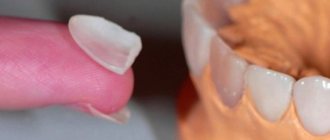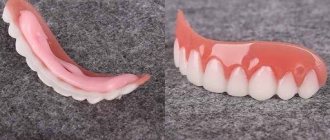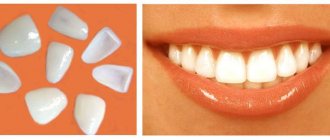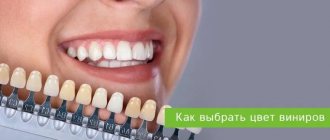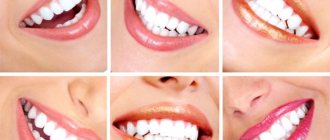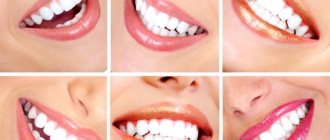Be careful when purchasing this product: Removable dental veneers Perfect Smile, Snap-On Smile, Hello Smile, Dr. Smile! Let's find out what it is and how not to run into scammers or bad marketers and not be left without money or buy a cheap product at an inflated price.
Check : “Removable dental veneers.” As stated on the sales pages:
- A BEAUTIFUL SMILE IN 2 MINUTES!
- Perfectly straight and white teeth
- Retains securely on teeth 24/7
- One size fits all (suitable for both men and women)
- HOLLYWOOD SMILE INSTANTLY!
High-quality and comfortable removable veneers, easy to use and suitable for everyone, representing a bridge-like structure that rests on natural teeth without subjecting them to grinding.
The design is made of thin, durable and stable material that is not susceptible to substances such as tea, coffee, and cigarette smoke. Snap-On Smile can be used both for a long time (years!), and for a shorter period, using it as a light and convenient structure that temporarily replaces teeth during the period of permanent dentures.
Removable veneers – what are they and how to use them? How justified is such a purchase?
In pursuit of a flawless smile, many are often tempted by the advertising promises of manufacturers of inexpensive removable veneers. In such cases, most often we are talking about budget cosmetic mouthguards made of plastic or sets of template plates, which you need to attach to your teeth yourself using dubious glue from the packaging. Both options have many significant disadvantages. Therefore, in today’s article we will talk in detail about whether it is possible to insert removable veneers yourself and whether they are worth using at all.
How much does a “Hollywood” smile cost?
How much do removable dental veneers cost? If you study the offers on various sites, the average price will be 1,200 rubles for a complete “transformation” of your smile. But, as practice and reviews of people who have decided to make such a change in appearance show, this is money down the drain. In reality, such products will not make your smile more beautiful, and they are impossible to wear.
If the patient is interested in the cost of temporary veneers, which need to be worn while the permanent ones are being made, then their cost, as a rule, is already included in the overall price tag. Those. there will be no additional costs. Classic non-removable ceramic onlays for teeth cost from 15 thousand rubles and more - it all depends on the cost of materials and methods of processing them. By the way, if necessary, the doctor will be able to remove them and install new ones if the need arises.
1Gurel G. Ceramic veneers, 2007.
Your questions and answers
QUESTION I bought removable veneers online, but I cannot attach them to my teeth. They fall off constantly. Tell me how to do this better? Alexandra
ANSWER Hello, Alexandra. Unfortunately, there is nothing we can do here. Because these are not veneers at all, but their imitation. Real veneers are installed in dentistry using a special adhesive composition - and remain on it for years. Also, real veneers are made based on impressions of the patient’s dentition, i.e. they are individual and precisely adjusted to the parameters of a particular person. Whereas “veneers from the Internet” are template overlays made according to standards known only to the manufacturers themselves. That's why they don't stick to the teeth. The use of any independently selected adhesives is unacceptable, as this can only harm yourself. Therefore, we do not recommend wearing these products. But you can use them for creativity, crafts - whatever your imagination allows.
Removable veneers - what is this design and what are its features?
What are removable veneers really?
So-called removable veneers have nothing to do with real ones. When describing this method of quick cosmetic smile restoration, it would be inappropriate to ask questions about which doctor places such veneers and whether it hurts to place them at all. The fact is that most often this term refers to cosmetic removable mouth guards, which are put on the entire dentition at once and, in theory, thus transform the smile. In practice, everything is completely different.
Such designs usually have template sizes, so they simply do not fit in most people’s mouths. And even if you manage to capture them, you definitely won’t be able to talk to them normally, much less chew food.
There is another variety - again, template linings for each tooth. Such plastic plates are sold in sets of 70 pieces at a time, with a brush, tweezers and special glue. However, no one knows how safe the composition of this glue is. And such “veneers” are unlikely to look natural and beautiful on the teeth. Therefore, experts in the field of aesthetic dentistry strongly do not recommend the use of such products, since they can not only be useless, but even harmful to the tissues of the oral cavity and the body as a whole.
Advantages and disadvantages
The advantages or benefits, if you can call them that, are that for not very much money you can get a new look for some kind of masquerade or photo shoot. Then there are the disadvantages, which are mentioned by reviews from dentists and people who decide to buy removable dental veneers. The disadvantages of removable dental veneers are as follows:
- poor fixation in the oral cavity,
- the risk of getting into an awkward situation in society,
- not very aesthetic appearance,
- rapid coloring of lining materials with food coloring, tobacco smoke, etc.,
- discomfort when wearing: such pads are made according to a template, so they will be uncomfortable after installation. After all, absolutely every person has their own individual parameters for the shape and inclination of their teeth, their sizes - it is impossible to measure everyone with one “ruler”,
- unpleasant “chemical” smell or taste from materials,
- risk of complications: damaged enamel, pulpitis, injuries to teeth and gums, chemical and thermal burns, allergic reactions to materials, risk of choking on a peeling pad or swallowing remaining adhesive.
“I placed an order in one group and was led by praise and a large audience. And I was very pleased with the price - it was only 500 rubles, to be honest. But on the day I received it, it turns out I was added to the blacklist. And I couldn’t leave my not at all positive review. These turned out to be not veneers at all, but some kind of toys, just to scare children with them. They do not stick to the teeth and fall out constantly. In general, horror!!!"
Marina_99, review from the woman.ru forum
Types of temporary microprostheses, including preparation and creation of impressions
What types of removable veneers are there?
- temporary plates - such plastic overlays are installed by the doctor in the dental office, after preparing and preparing the teeth for the installation of permanent structures. They will need to be worn until permanent ceramic or, for example, zirconium plates are ready. By the way, many people are interested in the question of how old people are to get veneers. So, a similar procedure is performed on patients at least 18 years of age,
- removable template mouthguards and overlays - you can buy them on the Internet, pharmacy or cosmetics store. However, they are really of little use - neither cosmetic mouth guards nor overlays with a cheap adhesive composition will stick to the teeth for a long time and reliably. Moreover, they can damage the enamel and mucous membranes, provoke inflammation,
- individual removable Snap-On Smile - such cosmetic prostheses are made from impressions exclusively in the laboratories of the American company DenMat in the USA or Europe. That is, in a Russian clinic you can undergo all the preparatory procedures, but you will have to wait about a month for the arrival of the finished plates. Such designs, by the way, also allow you to disguise missing teeth. However, experts do not recommend wearing them on a permanent basis - this is an acceptable option as a temporary measure.
Video instructions in Russian Perfect Smile Veneers (Perfect Smile Veneers)
It is quite easy to adapt to wearing an elastic plate. A video instruction in Russian, which can be viewed on the website, will help you correctly install Perfect Smile Veneers. After the first installation, using veneers will be very easy. The process will take a few minutes of your time.
How to use and how to place veneers:
- After purchase, it is recommended to place the plates in hot water.
- Wait about 2 minutes for them to soften.
- Remove the dental veneers from the water.
- Fasten as tightly as possible.
- Wait for the plates to take shape.
- After removal, it is necessary to rinse the device with warm boiled water.
If you follow the instructions correctly, subsequent installation will not take much time. The product is a cosmetic accessory, so it is not advisable to bite into hard food or cause mechanical impact.
Is it possible to install veneers without damaging the enamel?
If we talk exclusively about removable aesthetic mouthguards, then standard polymers, silicone, polypropylene and other types of plastics of appropriate shades are usually used for their manufacture. All these are inexpensive materials that can be easily processed and painted. Such structures are installed in the oral cavity without any grinding of teeth or taking impressions. However, due to their standardized size, such structures practically do not stay in the oral cavity; it is impossible to speak normally with them, chew food, or even smile.
On a note ! There is a separate type of cosmetic removable dentures Snap-On Smile. They are made individually for each patient, so they require preliminary impressions. The development belongs to the American company DenMat, so the prostheses themselves are created in the laboratory of the manufacturing company. Such onlays stay in the mouth much better and allow you not only to transform the aesthetics of your smile, but also to visually restore missing teeth. However, this option can only be considered as a temporary solution. Read more about Snap-On Smile dentures in our separate article.
However, temporary onlays can also look like real classic ones, that is, one thin plate for each tooth. In dentistry, such products are usually made of plastic and fixed with temporary adhesive until full-fledged microprostheses made of ceramic or, say, zirconium are ready. In this case, preparation and making impressions are an integral stage of smile restoration.
What if you choose subtle options?
Sometimes, when choosing ultra-thin plates, for example, “Lumineers” from the same DenMat company, it is possible to completely avoid turning the living enamel, but here we are talking about full-fledged permanent veneering. On sale you can find cheap template analogues - plastic overlays in a set with glue of dubious quality. Such products cannot be of high quality and, as noted above, it is better to avoid them so as not to harm the enamel and gums
Video on how to put on veneers
Popular After 2-3 minutes, the gel is washed off and slightly dried with air. Dental adhesive is then applied to the surfaces of the onlay and teeth, and a dental light is used for bonding. The installation of microprostheses does not end there.
Innovative removable overlay veneers TruSmile Veneers Before the fixing composition is completely fixed on the teeth, its excess is removed, and the transition zones between the plate and the tooth are polished.
Next, a check is made to ensure that the veneers are comfortable when moving the jaws. If everything is fine, the installation of the records is complete. If the patient feels discomfort, the plates are subject to further adjustment.
Dental adhesive for veneers contains fluoride and other minerals that have a beneficial effect on the condition of the enamel.
- Porcelain veneer Let everyone look at your teeth, tell you which option is the most effective, and then you, if anything, will figure out where and how to place veneers.
- Stages of installing veneers Installing orthopedic veneers is a complex procedure consisting of several stages, which on average takes from 7 to 14 days to complete.
Stages of installing veneers Installing orthopedic veneers is a complex procedure consisting of several stages, which on average takes from 7 to 14 days to complete.
Preparation and sanitation of teeth. Plates can only be attached to healthy teeth. Therefore, if there are dental diseases, they must first be cured. Before installation of structures, an inspection and x-ray examination are carried out, and the oral cavity is disinfected.
The magic of zirconium dioxide is carried out on a Russian milling machine, working according to a whining program.
What glue is used to install removable veneers and its features
So-called removable veneers, which look like mouth guards, are simply placed on the teeth. To secure them, no adhesive compounds are needed. Although we cannot talk about any reliable fixation in the case of template cosmetic prostheses. No complicated instructions for their use are required either.
The removable plates, which follow the shape of the teeth and are sold in packs of 70 pieces, have a template shape. They are attached using a special glue that comes in each set. The kit usually also includes a special brush and tweezers. But if professional dentistry uses proven compounds, then in this case it is not entirely clear what exactly the composition of the glue is and how safe it is for the body. Therefore, dental experts strongly recommend not to risk your health.
Classic non-removable products are fixed with a special heavy-duty adhesive; subsequently, you will not be able to remove them yourself. But for Cerinate (DenMat) lumineers they use a special patented adhesive composition, which additionally has protective properties for the enamel[1].
What materials are they made from?
Overlay removable veneers are made of polymers, silicone, polypropylene, and plastic in light shades. These are inexpensive materials, they are easy to process and can be easily painted in enamel colors. But we must understand that even in professional dentistry such materials are used only on a temporary basis, because they have low performance characteristics. The materials are softer and more fragile than those used for real microprostheses. They also have irregularities and pores on the surface, into which dietary fiber and dyes become clogged.
Fixed plates - indications and installation
But let’s return to the question of what veneers and lumineers are in the classical sense. We are talking about very thin overlays that are fixed on the front side of the front teeth in order to hide their aesthetic defects, that is, to correct the shape and size of incisors and fangs, to disguise too large gaps between the teeth, to give the enamel a beautiful snow-white shade and vibrant shine. After such a procedure, your smile can be transformed beyond recognition.
In their classic form, veneers are immediately recognizable
The plates themselves are made from durable and aesthetic materials, most often from pressed ceramics or zirconium dioxide. There is also the option of more budget-friendly composite plates. By the way, with the help of a composite, teeth are literally grown in a direct way - the front surface of the incisors is covered with a photopolymer and immediately illuminated with a polymerization lamp, that is, all manipulations are carried out directly in the patient’s oral cavity.
If we talk specifically about the indirect method, then the thickness of one such structure usually varies from 0.6 to 0.8 mm. Therefore, before installing microprostheses, the doctor first grinds off a small layer of enamel in order to preserve the anatomical parameters and aesthetics. Each plate has a small protrusion at the base, which, after fixing the product, neatly overlaps the cutting edge, which increases its strength and improves other performance characteristics.
“When I was getting veneers, I agreed to have them trimmed myself, but honestly, I didn’t think that so much would be removed! I almost cried when I saw my smile after the dissection. Thank God they gave me removable plastic pads, otherwise I don’t know how I would have walked. With plastic ones, of course, it’s not very convenient, but what can you do? Now I’m waiting for my ready-made teeth to arrive from the States.”
Vikki, review from the women's forum woman.ru
But there is another option - ultra-thin plates with a thickness of 0.2-0.3 mm. The most popular brand that produces these types of pads is the Lumineers brand, which belongs to the DenMat company. To create ultra-thin plates, they use a special patented material called Cerinate, which is both highly durable and almost flawless in aesthetics. In some cases, when choosing ultra-thin onlays, it is possible to completely avoid grinding your living enamel.
Fixed plates are installed in patients using approximately the same algorithm. The universal sequence of actions is briefly described below:
Although turning the enamel is not always necessary, it is still one of the stages of action
- preparation, including treatment of carious cavities, replacement of old fillings, anti-inflammatory therapy if necessary, removal of plaque and deposits, selection of the shade of future restoration using the Vita scale,
- turning the enamel - removing a small layer of living hard tissue so that after installing the plates, the teeth do not look too voluminous and massive,
- making impressions or 3D scanning of the internal structures of the oral cavity,
- conducting photometry – fixing photoparameters of facial symmetry,
- bite modeling on an articulator or using advanced digital smile design software,
- installation of temporary plastic overlays to protect ground incisors and canines and temporarily hide aesthetic defects.
Once the permanent products are ready, it is time to remove the temporary overlays. Finished permanent veneers are attached using a special heavy-duty adhesive composition.
Classic non-removable plates are the best option if you want to get a highly aesthetic and durable result. Any removable structures aimed at aesthetics are acceptable only as a temporary measure, and many of them are not suitable for use at all, being only a product of an advertising gimmick.
The price of the prosthesis depends on the material chosen for the veneer
And, of course, on the doctor’s qualifications. When making veneers, composite or ceramic is used. I recommend placement of ceramic elements to my patients.
Composite linings have the same strength properties as ceramic ones. The main disadvantage of overlays is the rapid and irreversible change in color when drinking coloring drinks: natural cherry juice, coffee, and so on. The wearing period of composite veneers is limited, a maximum of five years. Veneers are inexpensive, the price of one unit is 8-9 thousand/rub. Therefore, patients with any income can order them.
Preference for ceramic products is dictated by their complete external correspondence with natural teeth.
Throughout their entire service life, and wearing ceramic veneers for about 25 years, they do not lose their original whiteness.
The only drawback is the cost of the ceramic lining.
How many teeth can veneers be placed on?
When answering the question of how veneers are placed, you should immediately pay attention to the fact that this kind of restoration plates are fixed only on the front teeth on their front side. By the way, such onlays are also placed on crooked teeth, but only when they have slight curvature. Usually they are recommended to be attached to all incisors and canines that fall within the smile zone, and these are 10 front upper and 8 front lower teeth. Veneers are placed using a special technology, so only an experienced specialist can install them correctly. The use of this restoration method allows you to make a Hollywood-style smile snow-white and irresistible.
Your future smile is worth all the effort
Video on how to put on veneers
Their advantage lies in the speed of production. Composite caps are most often used for therapeutic purposes for the restoration of front teeth with chips and cracks. Such overlays do not provide such a flawless result as ceramic ones, and over time they change color even with careful care.
Indications and contraindications for use Veneers made from composite materials have a maximum service life of 5-6 years.
If you focus on the price-quality ratio, then it is optimal to use ceramic veneers for the front teeth. For chewing teeth, zirconium overlays are suitable, they can withstand significant loads, but are inferior in aesthetic qualities.
How many teeth are veneers placed on? The procedure involves building up lost dental tissue, resulting in complete restoration of the tooth.
In other cases, preliminary grinding is carried out, after which the microprosthesis is formed layer by layer, followed by grinding and polishing. Indirect method - it is used for orthopedic onlays.
Veneer care
Oral care remains the same - twice a day. However, the paste should not contain abrasive substances, and the brush should not be hard. If it is not possible to properly clean teeth in hard-to-reach places, it is necessary to regularly visit the dental office for professional cleaning.
Veneers are made of fragile materials (except zirconium), so they should be taken care of. You should not crack seeds, chew nuts, indulge in candy, or eat solid foods (raw carrots, apples). Ceramic can crack easily and can be expensive to replace. Therefore, after installing the pads, your diet should be reconsidered.
Nicotine is well absorbed into any surface, so smoking after installation of veneers is not recommended.
Gum disease can ruin all your efforts to achieve a beautiful smile. If your gums start to bleed, visit your dentist immediately. Bleeding, loose gums will not be able to hold teeth in their sockets and will cause unsteadiness and even loss. Therefore, paying attention to your gums is the key to health and a beautiful smile.
In what cases are veneers placed, and who can do it?
Microprosthetic surgery is suitable for people over 18-20 – those whose teeth are already fully formed.
Accordingly, it is better for children and adolescents to wait. To undergo the procedure, a person must be healthy. Caries and other oral diseases must first be cured.
A suitable surface for fixing the pads is also important. If the incisor has been torn out, an implant is first placed in its place and a plate is fixed on it.


